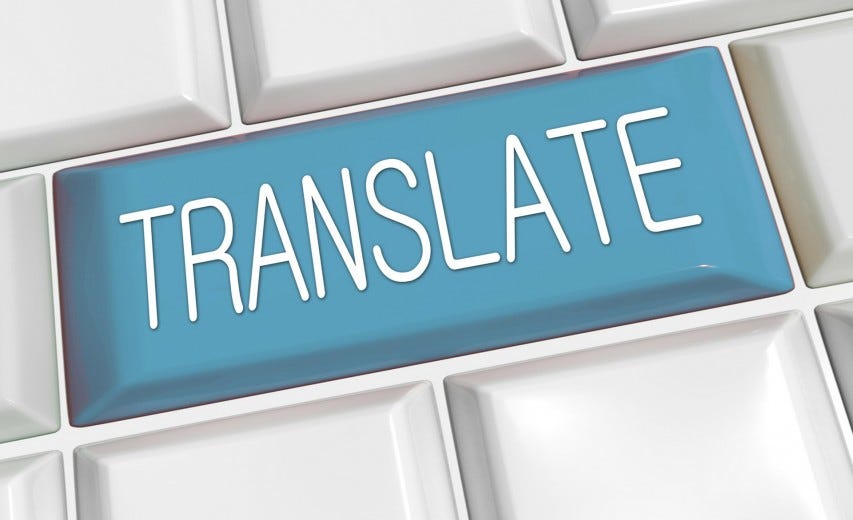21 iOS Localization Traps to Avoid in 2017

If you want to make your iOS app more visible and reach new customers this year, you’ll have to step out of your comfort zone. How do you do that? By localizing your app and seeking new customers in different parts of the world. Mobile apps have become global and, by 2020, revenues could exceed $101 billion. If you want a piece of the action in 2017, you’ll need to move fast. Plan for iOS localization that is both universal and local, for every new market you approach.
Why iOS Localization?
The close of 2016 bought some pretty good news for Apple. Despite fierce competition, iOS operating systems still make for the most desirable smartphone in the world. Sales of iPhone 7 reached respectable numbers in almost all countries. So, from China to India, Mexico to Thailand, your next customer could come from anywhere! Get your iOS localization strategy right and your downloads will grow faster than ever.
Just take a look at the App Store and you’ll see that iOS app localization is no longer a strategy to ignore. The most popular apps, including Facebook, WhatsApp, Netflix and Uber, are all localized. With iOS 10’s latest update, localizing your iOS app is now easier than ever before. So, if you haven’t started to prepare your iOS localization process yet, this should be your top priority in 2017.
But, as with so much in life, there’s a right way and a wrong way of localizing your iOS app. You need to have a clear view on the process, so that you can reach as many customers in their native languages as possible. It’s not just about translating your content and adding a nice flag on your icon. You need to get ready to reinvent yourself every time you enter a new market!
The best way of doing this is by avoiding those localization traps that make you spend time and money, without yielding results. To get you started, here are 21 iOS localization traps to avoid in 2017.
1. Creating Your iOS app without thinking about localization
Correct iOS localization means creating a product that’s ready to go global right from the start. When you factor in international expansion from the beginning, rolling out multiple language versions will be much easier. This process is called internationalization. You are basically ensuring that your app is flexible enough to be tailored to any local market. You can stretch the design, change the colors and rewrite the code with ease.
In other words, you should write your app so that it’s easy to translate, even though this will add some initial expense. Separate your text from your code and make sure your programmers use Unicode strings. This is the easiest way to develop an iOS app that can support any language and character. You may not know from the beginning which countries you’re going to target in the future. So, by leaving an open door to modifications, you’ll save time and money when you start the iOS localization processes.
2. Not translating your app’s name when needed
In most cases, it doesn’t matter how cool or interesting a name sounds in English when you take it global. If it isn’t appealing enough for foreigners, there’s no chance your app’s name will sell outside your country.
Your app’s name should be easy to pronounce and recognize. Keeping it short and using clear descriptions of your app is essential. Especially when your products are sold in stores with over 2 million other apps waiting in line! With so many options, customers simply won’t take the time to understand the meaning behind a strange sounding name. They’ll just download something else.
Translating your app’s name is a wise solution, as long as you can keep your brand identity intact. Make sure that the translated meaning is close to your original name, as there’s nothing more frustrating than a misleading app name! The price for this kind of mistake during iOS localization is bad reviews. What do bad reviews lead to? Poor ranking in the App Store.
Before you start to panic, changing a brand’s name isn’t uncommon. Even large companies do it when they switch languages. LinkedIn did it for the Chinese version of their platform, with excellent results. As long as you spend the time to research each individual market, you should be able to come up with a name that will suit their tastes.
3. Using the same icon for all audiences
The average person is exposed to more than 5,000 brand messages and ads every day. Which is an awful lot of competing traffic! How many of these ads and commercial messages get noticed? Around 12. That’s right! 12! With such a miniscule chance for brand visibility, the need to create a strong icon for your iOS app that leaves an impact is higher than ever.
When it comes to iOS localization, your app’s icon plays an important role. People tend to press the download button when they’re charmed by an inviting image, regardless of where they come from. But, keeping the same visual for all markets is risky. Why? Because colors and symbols have different meanings from one country to another.
Of course, any change you make requires significant research and testing. You need to keep your unique identity while still respecting local cultures. Coca Cola had to rethink its logo to sell in China, as the traditional one held no meaning for the locals. Despite translation and use of different symbols, the global manufacturing giant managed to maintain its distinctive features.
You may not have the same kind of budget as Coca Cola, but you can still come up with a flexible plan. Choose an icon without text that uses no religious symbols of any kind. This will save you a lot of trouble when it comes to approaching new audiences.

4. Designing your app for one language only
Your layout may look great in the original version of your app. But you need to consider how it will look when it’s translated to Arabic, French, or Spanish. China has become an important market for iOS apps. So, it’s time to think seriously about creating an appealing design to sell in countries where iOS is particularly popular.
Many languages need more space than English for saying the same thing, as they have different grammar structures and phrases. So, don’t let a nice layout mislead you if it isn’t malleable enough to accommodate foreign text. Keep it practical, or you’ll spend long hours trying to make difficult words and expressions fit the constraints of your original design.
5. Postponing iOS localization
Even if you’re keeping localization in mind from day one, that doesn’t mean much if you’re not doing anything about it. So, make it your resolution to take action in 2017. There’s no better time to start than right now. Every day you delay localizing your app gives the competition more and more opportunity to beat you to the market.
Waiting for important updates, or over-thinking the process are really just excuses. All updates and improvements can still be carried out during the iOS localization process. After all, when you plan for localization from the outset, it’s the easiest way to avoid mistakes.
6. Organizing separate teams within the project
App localization can take weeks, or even months, depending on how fast you move and how willing you are to get involved in the process. Localization is harder if your team doesn’t understand each aspect of your project. You don’t need your translators to be programmers, or your developers to speak several tongues. But, they do need a clear understanding of the role of every person on the team.
Translators often don’t possess much technical knowledge, while programmers usually aren’t aware of cultural differences. Hiring a marketing specialist is a good idea, but you’ll need to use local resources for each market to correctly gauge the audience and new ways of thinking. And you need all these people to come together, if you want things to move smoothly.
Localization requires a lot of teamwork, so be sure to involve all departments. It’s almost like launching your app from scratch, except that you’re doing it for a different audience. And that makes things harder, not easier.
7. Starting without a Localization Manager
Coordinating your localization team is a full-time job. So, if you’re already overloaded with work, you should find someone to oversee the process for you. A good localization manager will work closely with your translators, programmers and engineers. They’ll have a complete view of the project and know how to manage time, budget and resources efficiently. This will free you up to focus on steering your business forward, while remaining in contact with your iOS localization team.
8. Not targeting audiences in each country before starting
Just as you conducted research before launching your iOS app in your country, you’ll need to identify your international buyer personas as well. Find out about potential customers in every new country you intend to launch your app.
What you know about your national audience counts for very little when you go global. Foreigners have different mindsets and buying habits, ideologies and preferences. So, if you want to make them download your app, learn to speak their language like a native.
Correctly targeting audiences is essential for successful app localization. This way, you can send relevant messages to your customers and be sure of higher engagement. If users can easily identify themselves with your product, you’ll increase downloads and positive reviews. This will increase your ranking in local App Stores and generate higher revenue.

9. Using free translation sources to save money
Many small business owners make this mistake, thinking that they can reduce costs. But most of them end up spending more money fixing problems that could have been avoided in the first place.
In 2017, human translation is the only way you can guarantee you’re sending the right message to your clients. Machines can rewrite what you say in any language. But, they lack the ability of keeping the meaning you wish to give to each phrase. In other words, translate by robots and you’ll end up with text that sounds like it was translated by robots.
Your long-studied marketing strategy will amount to nothing if your app’s name and description, or CTA buttons sound odd — or worse — offensive!
10. Not providing your translators with the right context
Working with translators means you’ll have real people choosing the most appropriate words to use depending on each context. So, you’ll need to give them all the details about your app.
Just sending them some texts or strings to translate, without explaining what they’re writing about will create confusion. You’ll end up with a lot of back and forth, making things harder to manage for everyone involved in the localization process.
Translators don’t just convert texts from one language to another. A professional team understands cultural differences, knows about jargon and colloquial phrases, and when to use them to make a difference. They can help you reshape your message to make it sell your product better.
Many translators who provide app localization services are used to working with strings and software. So, by giving them all the information they need, you’ll get the best results possible. This includes uploading screen shots, notes and suggestions, as well as providing them with a list of keywords for your ASO goals.
11. Working without clear goals and deadlines
Even though app localization is a complex process, you should separate the steps and keep track of your progress. If you don’t set clear goals and just wait for everything to be done before evaluating, you risk wasting time and spending extra money.
By allowing your team to work without intermediary milestones, you risk losing control over the process and will delay the launch of your localized iOS app. So, create a localization calendar to follow. This way, you can measure your team’s work while keeping an eye on costs and deadlines.
12. Not using translation management software
If this is your first iOS localization endeavor, you may not know what translation management software is. But that doesn’t make it any less important for your team. By using the right translation management software, you can work efficiently and harmoniously.
No more long email threads and communication errors. Everything they need to know is one click away and they can work easier and faster. The can collaborate on one platform, and even over different time zones. Developers can upload context for translators. Translators can leave explanations. And your localization manager can glean the progress of your iOS localization project with one simple glance.
13. Targeting languages, instead of countries
You’ve translated your iOS app into Spanish and now you feel ready to conquer all of South America. Slow down! Sorry to say this, but that’s the wrong way of going about iOS localization. Each country is different, so keep that in mind when localizing your app. Mexicans use different vocabulary from Argentinians. Customers who live in Costa Rica don’t share the same climate as those in Europe.
Just think about the English language. If you’ve ever shared a conversation with an Irishman, South African, or Australian, you’ll know that even when speaking the same language, there’s a lot of scope for misunderstandings!

14. Ignoring cultural factors
Our vision of the world is made up of clichés. The French love garlic. The Spanish dance Flamenco. Argentinians can’t get enough of eating beef. While there may be some semblance of truth about some of these beliefs, most of what we know about specific countries is actually untrue. Assuming that you know about a culture because you watched a television program about it isn’t going to cut it.
You’ll need to go deeper into the local market to give your customers a positive user experience. Adapt your content to the cultural differences in each country to become successful in local markets. Humor, relationships, etiquette and societal values vary from one region to another. Ignoring these essential differences will almost certainly transform your investment into failure.
15. Skipping marketing localization
Knowing the local market will be a necessary advantage when you launch your app in a new country. iOS localization should involve a marketing expert from day one, to make sure you invest in the right modifications. Translating keywords is better than no strategy at all, but that alone isn’t going to boost your downloads.
You’ll need to see what works in each specific country and optimize your content for each local market. Come up with a flexible ASO strategy, with new descriptions and meta data that work for each individual market and local media.
There are hundreds of new iOS apps in the App Store every day. So, you’ll need to get yours right if you want to get noticed and increase downloads and sales.
16. Underestimating your competitors
2017 is set to take app localization to the next level. Even the smallest developers will localize their apps to increase their revenues. And they’ll find new ways of making themselves known globally. Your competitors are going to be everywhere, so you’ll need to step up to the plate.
You’ll also have to deal with local iOS app developers, who have the advantage of knowing the local market better than you do. So, don’t ignore the competition. Don’t put together a strategy as if you were the only player on the market. Learn as much as possible from your competitors so that you can become better than them.
Make sure your team knows all about different local app stores. What apps are popular, why people download them, how many positive reviews there are and what features generated them. Use all these insights to improve your product and marketing strategy, to get more 4 and 5 stars reviews and increase your position in the App Store.
17. Not translating everything
You’ve probably already realized by now that app localization means more than translating names, descriptions and screenshots. You need to translate and localize everything for your audience. Customers will feel tricked if they download an iOS app with an enticing description they completely understand, only to receive a download that’s only half translated.
You may save money and time by not translating all maps, error messages or feedback requests. But this will soon come back to you like a boomerang, with negative reviews and unsatisfied users. Don’t forget that almost 90% of apps are deleted as fast as they’re downloaded. If yours doesn’t live up to expectations, it will be wiped out of your user’s memory in instants.
18. Not working with a local team
No matter how effective your localization team is, you’ll need a “local touch” to obtain useful feedback. Local experts can easily identify any unnatural sounding words you’ve used during translation. They can also provide you with important advice about how to approach your audience.
Another great advantage when working with locals comes from the fact that you get an accurate idea about legislation. It’s hard to keep track of all legal modifications, especially in countries where new laws don’t make the international news. A local team will always know what’s new in the field and keep you away from unwanted legal issues.
19. Using the same content for all countries instead of encouraging local contributors
When you promote your iOS app, you’ll need content outside of your app. That includes a website and a consistent presence on popular social media channels. You’ll need to customize your content across each different region if you want your brand to resonate in local markets.
So, work with transcreation professionals or local writers who can craft an appealing message, rather than a translated one. This is particularly useful when considering seasonal promotions or local public holidays. This will help you obtain higher engagement from your audience. The key is to maintaining a consistent message in keeping with your brand identity.

20. Not evaluating all costs before starting
Localization isn’t cheap. So, when starting your iOS localization project, make sure you include all expenses, not just what you’ll pay for translators. You’ll need programmers, a local team, testers, and a marketing campaign to promote your app in the new market.
Set a clear cost structure from the beginning. This way, you can calculate a budget and, depending on your resources, decide on the dimensions of your iOS localization project.
21. Launching your app without testing it
Testing may mean additional costs. If you’re working on a low budget and already missing a deadline, you may feel tempted to skip testing. But hoping that all translations and technical details match your standards (and your customers’) isn’t a good idea.
Getting feedback before the actual launch is essential, as there’s no second chance to make a first impression. All your hard work will be in vain if your foreign users download an app that fails to meet their expectations. So, test everything, from texts and customer care, to compatibility with all Apple mobile devices. Fix any problems that appear before your app comes out.
iOS localization is not as complicated as it looks. With the right team and the right tools, you can conquer global markets. The most important thing is to spend less time thinking about it and more time acting on it. Every day you fail to start your iOS localization strategy means more money that will go into someone else’s pockets.
Originally published at PhraseApp Blog.









